For the people of Quang Loi (Quang Dien District), one of the great anxieties is the problem of "fish pirates" in Vung Me aquatic resources protection area.
Mr. Ho Truc, Head of Fisheries Association Branch of Ha Cong Hamlet said, “They are very daredevil, using the electric stimulators to catch fish. Although the patrols are regularly carried out, the subjects sneakily exploit fish by night.
The police force patrolled and confiscated the illegal means and tools of fishing
Every year, the fisheries association branches in Quang Loi Commune arrest and administratively sanction more or less 10 violations in the aquatic resources protection zone, and administratively sanction tens of millions of VND. At one point, the subject used the high-powered boats fitted with electric stimulators for destructive fishing on the lagoon of Quang Dien and Phong Dien Districts. The fisheries surveillance force, the fisheries association branches had to use high-powered canoes, boats and an about-30-strong force lying in wait for months in order to hunt for the subjects.
A few years ago, while hunting for the fish pirates, Mr. Vo Da, then Head of Police of Sia Town (Quang Dien District), was severely stabbed by a fish pirate and underwent long-term treatment. After that, the subjects were arrested and sentenced to 6-9 months of imprisonment each.
According to the initial statistics, in the localities along the Tam Giang-Cau Hai Lagoon, over 1,500 households specialize in using xung điện (electric stimulators), giã cào (small boats for fishing inshore), and lừ mắt lưới nhỏ (folded, square-shaped, and small-mesh fishing net) in order to destructively exploit aquatic resources.
Nghề lừ (Fishing with the folded, square-shaped, and small-mesh net) on the lagoon
Dr. Nguyen Quang Vinh Binh, Director of the Fisheries Sub-department, since early 2020, the Fisheries Sub-department and the fisheries association branches have carried out about 400 patrols, inspections and control of aquatic product exploitation activities on the lagoon, discovered and sanctioned more than 20 violations
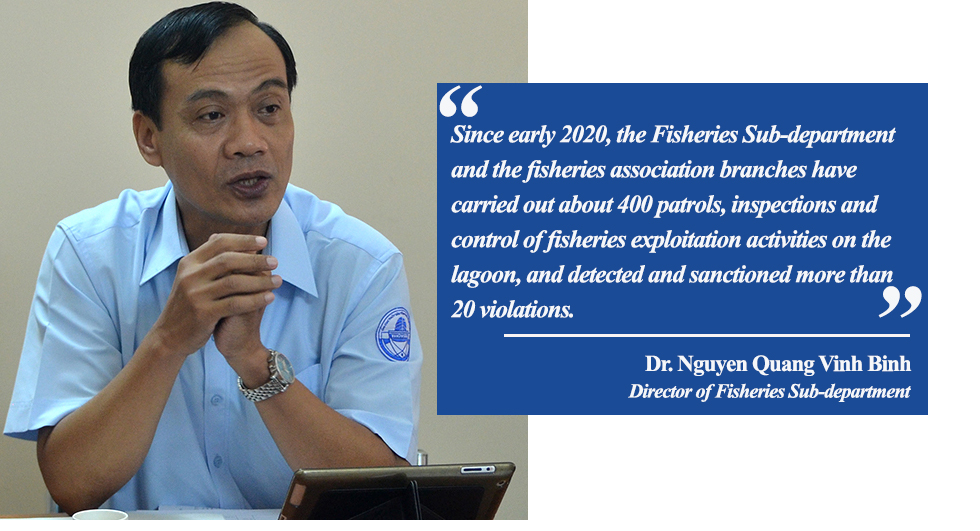
According to the fisheries association branches in some meetings, the funding is a hard nut that makes it difficult to patrol and hunt for violators. A head of the Quang Dien Fisheries Association Branch explained, “The Provincial Fisheries Sub-department provides about VND 1 million per year for the association branch, which does not supply enough fuel to the patrol. The purchase of means of patrol equipment costs hundreds of millions of VND. There are no support regimes for management and patrol... The expenses for the association branch are limited. Adversity limits wisdom. I hope the projects or the authorities at all levels will give more support to this activity.”
Sometimes, Mr. Phuong talks about the old story of the electric fishing net kept as a souvenir

In conversation with a lot of old fishermen wholeheartedly faithful to the lagoon, what worries them most is the depletion of some aquatic species as well as the gradual decrease in fishing output against the previous time.
At one time, many valuable aquatic species such as bass, blue crab, yellow spider crab, orange spotted spinefoot, grouper, snapper, lobster, and so on no longer or rarely appear.
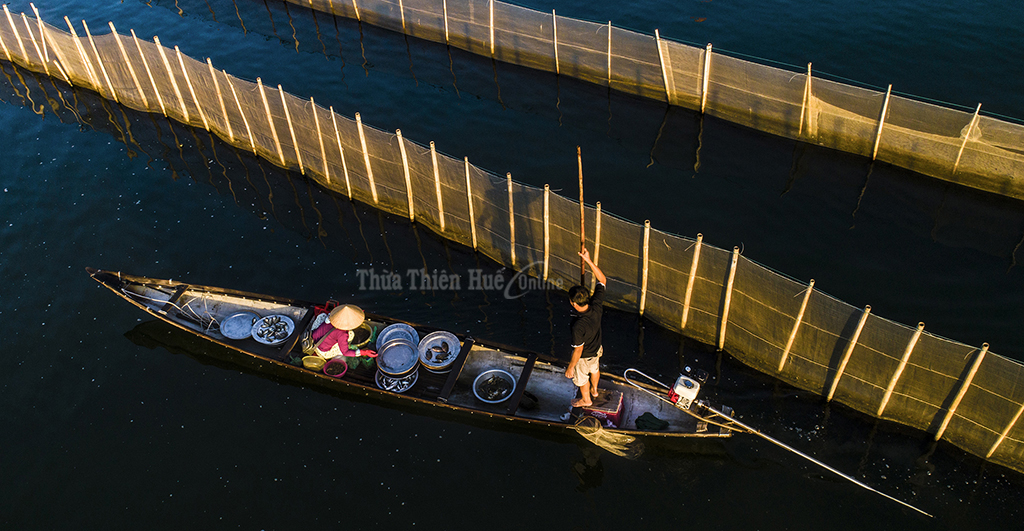
The depletion of aquatic resources makes it more difficult for the people to earn a livelihood
Mr. Tran Xuan Tam, Head of Vinh Hien Fisheries Association Branch (Phu Loc District) worried, “In the past two years, the quantity of seafood has decreased significantly. Some specialties such as lệt huyết, lệt cơm (synbranchidae), dorab ... in Vinh Hien Lagoon have gradually disappeared. People looked for lệt cú (synbranchidae), at a price of a few hundred thousand to millions of VND per kilogram, but recently there has been almost no lệt cú caught in fishermen's net.
According to the folk experience, lệt cú (synbranchidae) is a species that likes clean environment. The disappearance of this endemic aquatic species shows that the habitat in Vinh Hien Lagoon has changed.
The people along the lagoon explain that the decline of aquatic resources is due to nghề lừ (the fishing job with the folded, square-shaped, and small-mesh net), wastewater from shrimp ponds, and cleansing net with chemicals, which affects the quality of the lagoon water source.
.jpg)
Cleansing lừ (the folded, square-shaped, and small-mesh net) pollutes the environment
“Most of the households buy lừ; the only difference is the large or small mesh. The Provincial People’s Committee issued the specific regulation on net mesh in exploitation. However, handling the violations inequitably will lead to lawsuits. It is obligatory to comply with the regulation and apply stricter sanctions,” Mr. Hoang Lam, Head of Fisheries Association Branch of Loc Binh 2 (Phu Loc) expressed his view.
In addition to losing track of some valuable aquatic species, the exploitation output also has the sign of decrease. In Vinh Hien alone, in 2012-2013, the exploitation output of aquatic products on the lagoon reached 700-800 tons, now only 400-500 tons per year. Each year, the exploitation target discussed is a real challenge for the fisheries association branches, posing the problem of stable conservation to maintain long-term and sustainable resources.
The environment and ecosystem of Cua Lac Dam has changed over time

Mr. Nguyen Viet Hung, Head of the Provincial Environmental Protection Sub-department, said that the increasing population density in Tam Giang-Cau Hai Lagoon (the population growth rate of the lagoon area of about 1.8 %, higher than the general rate of the province of 1.18%) creates many problems of environmental impact.
Typically, the domestic solid waste appears more and more in the areas along the lagoon, floating on the water surface, forming a dense layer because it has not been collected and treated for many years. Notably, the undestroyable plastic packaging accumulates more and more, hindering the water circulation and metabolism in the lagoon, heavily polluting the lagoon environment.
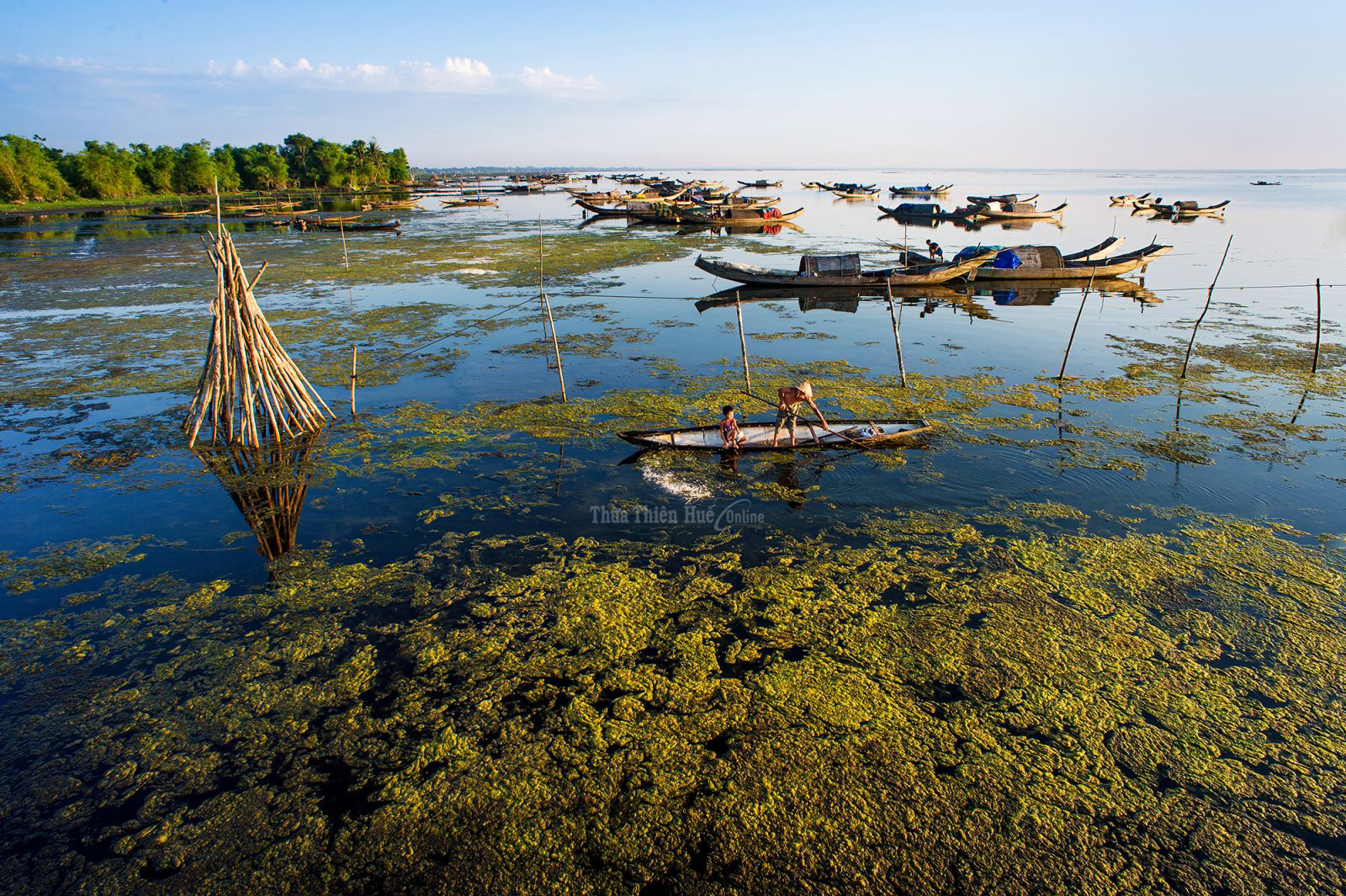
The polluted lagoon decreases some endemic species
It is the increase in the amount of household waste dumped into the lagoon in poor water circulation conditions that causes more serious pollution of organic substance and coliform.
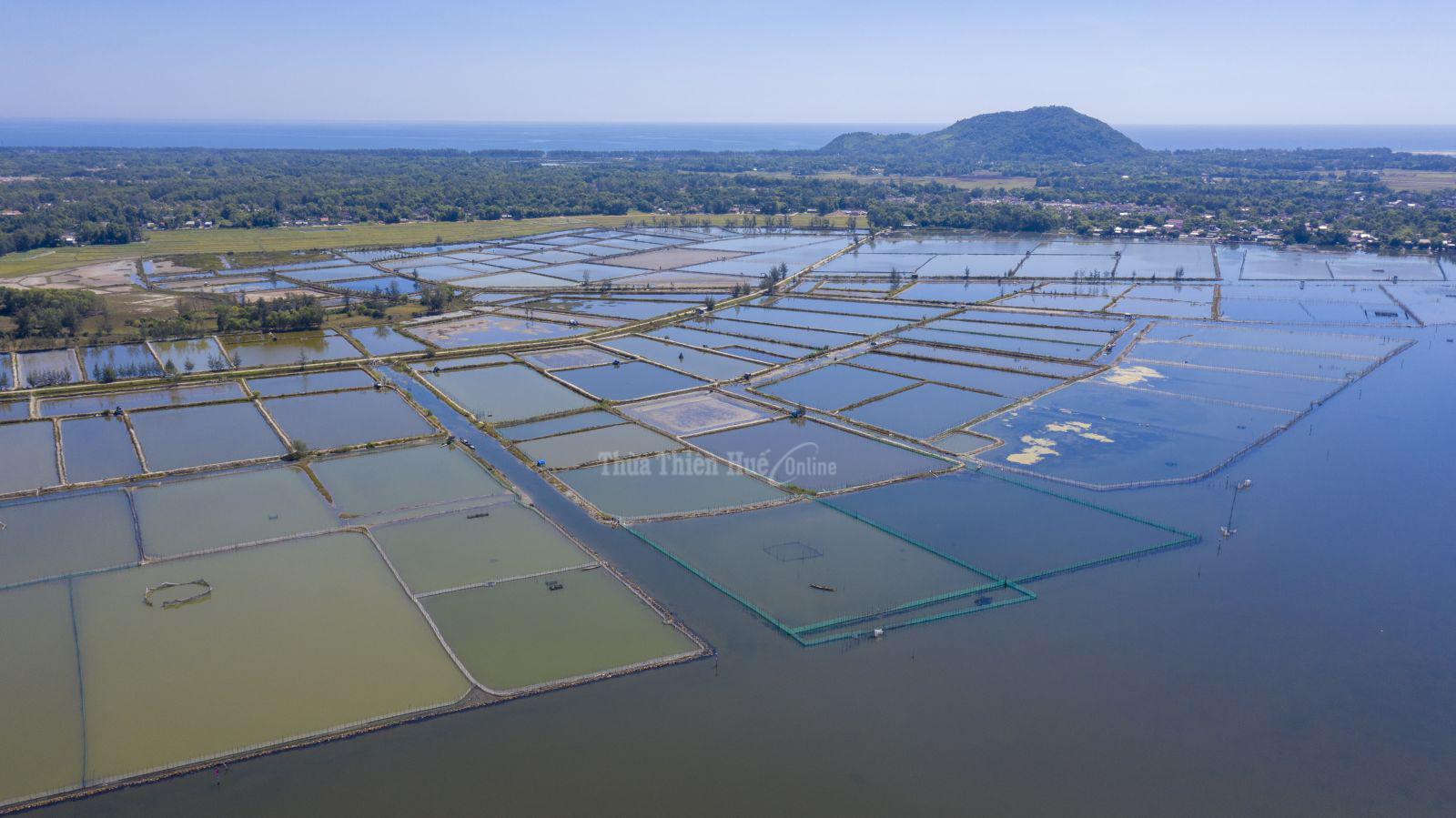
Feed, chemicals for pond treatment ... impact on the quality of lagoon water
Referring to the water quality of Tam Giang - Cau Hai area in recent years, a research worker expressed anxiety. “Although there are no specific parameters, with a few thousand hectares of low-tide shrimp, that means that a fair area along the lagoon is blocked for shrimp pond. That is the direction in effective economic development, but there is a need to weigh up the pros and cons or set up appropriate projects because sediment deposited for many years in the pond, and chemicals, feed greatly affected the lagoon water source,” he explained....
In addition, during the floods, the lagoon is likened to a mouth containing a lot of waste from the upland areas, polluting the water quality of this area. According to experts, those are the cause of the changed water source, depleting aquatic resources and significantly reducing the biodiversity of the lagoon. In the future, the opportunities to use the resources in the lagoon and the coastal area will also be limited and gradually lost.
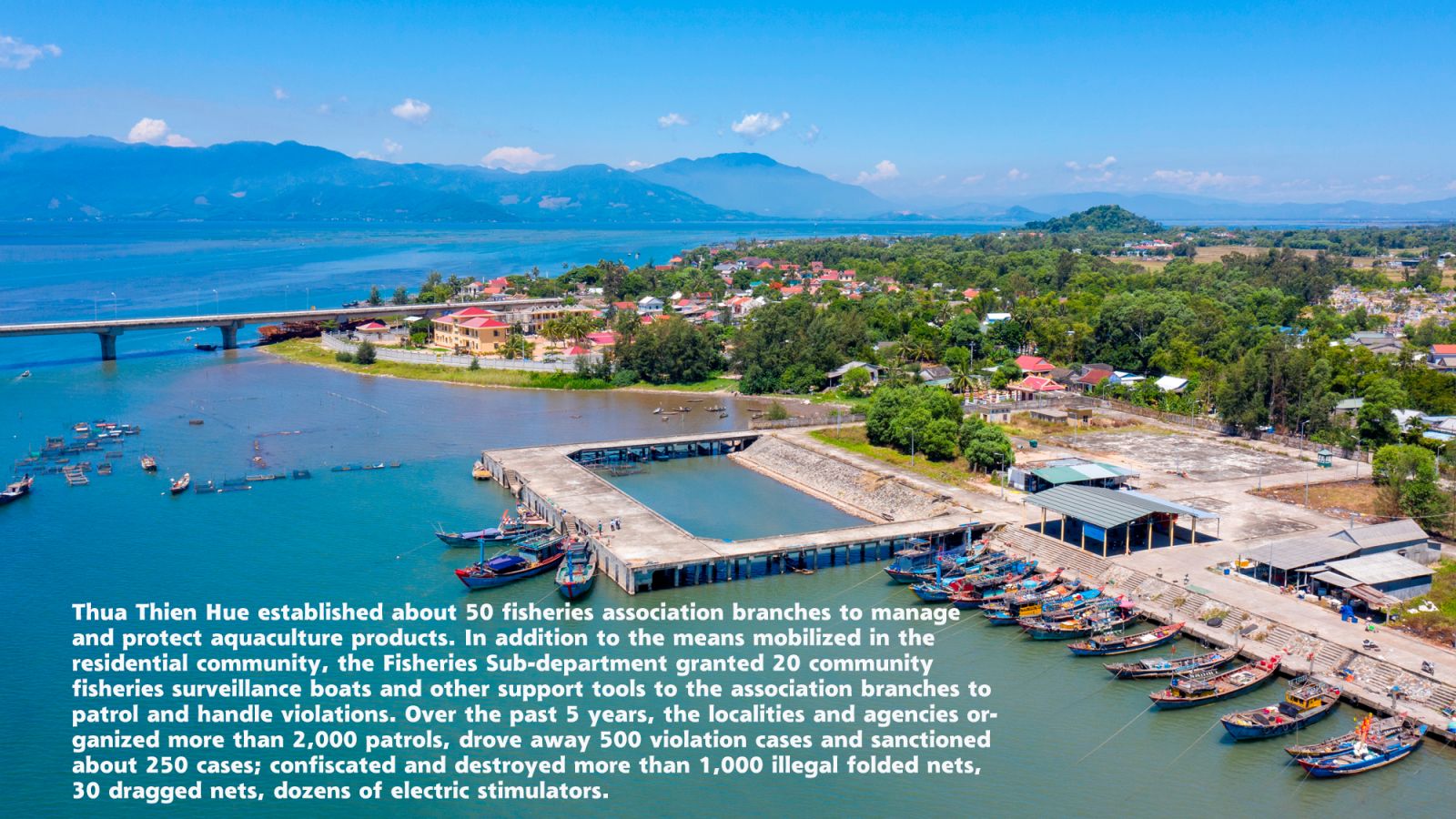
Brackish cage fish farming in Tam Giang Lagoon
Part 1: A source of livelihood for countless people